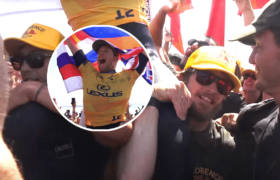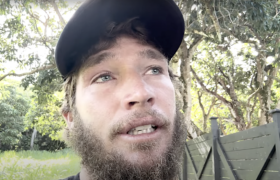"You either surf or fight!"
Now, if there is one thing I appreciate, more than many, it is the combination of surfing and conflict. I got my start stitching the two together, heading to Yemen directly after 9/11 because that’s where Osama Bin Laden was from and the country’s mainland had never been surfed, continuing on to Somalia, bringing boards to warring Lebanon, etc.
The seriousness of conflict and the silliness of surfing juxtaposing so poetically.
A tableau of absurd.
It is why Francis Ford Coppola included the iconic “surf or fight” scene in his masterpiece Apocalypse Now, I think. And what could be better than that?
Thus, I was very pleased to stumble across the genre being re-explored in a most recent The New Yorker. E. Tammy Kim, a correspondent for the august publication, had traveled to South Korea ahead of the joint military exercises that would be conducted between that country and the United States in preparation for a Chinese and/or North Korea attack.
She described the press conference aboard a U.S. naval vessel, the tour she took in the belly of a war beast, the way that soldiers from the two nations handled life on the base and the bit of protest against provocation by locals outside the gates.
Before, though, she had attempted to surf.
Earlier that week, I had stayed on Busan’s Songjeong Beach and taken beginner surfing lessons at a school styled like a beach shop in Malibu. Despite William Finnegan’s counsel, in “Barbarian Days,” that it’s impossible to become a proficient surfer “at an advanced age, meaning over fourteen,” I felt compelled to try. A more relevant memoir was Diane Cardwell’s “Rockaway,” about learning to surf in New York City during a midlife crisis. I wiggled into a warm-weather wetsuit and sat with a few other, much younger, newbies for a brief orientation on Day One. I had worried that pelagic jargon in Korean, my second language, would elude me, but surfing speak is all borrowed English: paddle, leash, nose, tail.
The teacher was a young, floppy-haired man shaped like an upside-down trapezoid. (I later learned that he was primarily a bodybuilder.) He showed us how to tie a leash and carry a giant foam board in the wind. We practiced the universal motions of pop-up and takeoff on the sand, knowing how much harder it would be on the water. We waded in past the impact zone, where waves crashed white. We lay stomach down on our boards as the instructor pushed us, one by one, onto the crests of incoming waves. I stood up a few times and felt an unnatural, physics-defying joy. I also learned to sit up on my board, straddling the tail and looking out at the sea. The waves appeared newly mysterious: Which ones would be good enough to ride? Where did they come from? What other bodies and vessels had they touched?
The piece moves on, adeptly, to the roots of the Korean Peninsula troubles, public opinion on matters, a “one Korea” bit and more war games but oh boy.
Surfing.
Finnegan, as you must know, also writes for The New Yorker and I am very happy that Kim recalled his counsel. The impossibility of becoming proficient, or even lower-intermediate, adult learning. Now, I am really all the way tired of adult learning, especially in the wake of Covid, but as a writer, and an appreciator of conflict + surfing in the service of Kafka, adult learning might be the very best.
Absurd piled upon absurd.
While Korea is safe, this whole business made me wonder where the best place to adult learn would be today.
Sevastopol?
Help.








